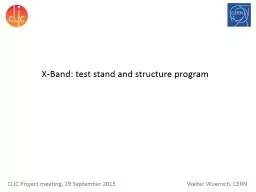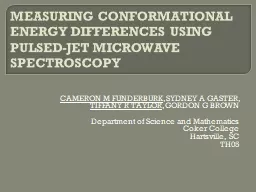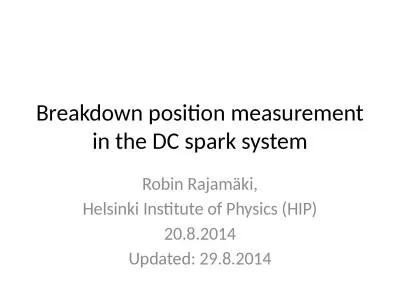PPT-Statistics of breakdown and conditioning in pulsed dc and r
Author : jane-oiler | Published Date : 2017-03-25
Anders Korsback Jorge Giner Navaro Robin Rajamaki and Walter Wuensch Motivation Statistics Physics The statistical properties of breakdown may give us insight
Presentation Embed Code
Download Presentation
Download Presentation The PPT/PDF document "Statistics of breakdown and conditioning..." is the property of its rightful owner. Permission is granted to download and print the materials on this website for personal, non-commercial use only, and to display it on your personal computer provided you do not modify the materials and that you retain all copyright notices contained in the materials. By downloading content from our website, you accept the terms of this agreement.
Statistics of breakdown and conditioning in pulsed dc and r: Transcript
Download Rules Of Document
"Statistics of breakdown and conditioning in pulsed dc and r"The content belongs to its owner. You may download and print it for personal use, without modification, and keep all copyright notices. By downloading, you agree to these terms.
Related Documents














